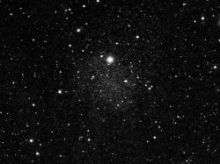Scientists searching for habitable planets beyond Earth shouldn't overlook F-type stars in favor of their more abundant, smaller and cooler cousins, according to new research from University of Texas at Arlington physicists.
Stars fall into seven lettered categories according to their surface temperature, but they also differ in other factors such as mass, luminosity and abundance in the universe. Scientists looking for habitable planets typically have focused on the less massive end of the spectrum, where our own G-type sun as well as the even less massive K and M-type stars reside.
F-types are the in the middle of the scale, more massive and hotter than our Sun. Their increased ultraviolet radiation has been thought to be a limiting factor for sustaining life. In addition, there just aren't as many of them.
But, UT Arlington Physics Professor Manfred Cuntz, contends: "F-type stars are not hopeless."
Cuntz said: "There is a gap in attention from the scientific community when it comes to knowledge about F-type stars, and that is what our research is working to fill. It appears they may indeed be a good place to look for habitable planets."
Cuntz and UT Arlington Ph.D. student Satoko Sato teamed with researchers from the University of Guanajuato in Mexico for a new work published this week by the International Journal of Astrobiology. They argue that since F-type stars have a wider habitability zone – the area where conditions are right for general Earth-type planets to develop and sustain life – they warrant additional consideration.
The researchers also explored the potential limitations caused by UV radiation by estimating the potential damage that carbon-based macromolecules necessary for life would sustain in F-type stars' habitable zones. To do that, they used DNA as an example and compared estimates of DNA damage on planets in F-type star systems to the damage that would be done on Earth by the sun.
The research included calculations for several different types of F-type stars, at different points in their evolution. It found encouraging results. In a few cases, the damage estimates were similar to the damage on Earth, if Earth did not have an atmosphere. The damage estimate was even less if an atmosphere on the planet in the F-type system was assumed.
"Our study is a further contribution toward the exploration of the exobiological suitability of stars hotter and, by implication, more massive than the Sun … at least in the outer portions of F-star habitable zones, UV radiation should not be viewed as an insurmountable hindrance to the existence and evolution of life," the study said.
The study is called "Habitability around F-type Stars" and is available online here. Co-authors from the University of Guanajuato were Cecilia Maria Guerra Olvera, Dennis Jack and Klaus-Peter Schröder.
Pamela Jansma, dean of the UT Arlington College of Science, said the collaboration between Sato and Cuntz is representative of the research advances that can result from a strong faculty-graduate student mentorship.
"Astrophysics as it relates to habitable planets is an increasingly popular topic, and Dr. Cuntz and his student have enriched that conversation by weaving elements of theoretical biology and planetary science into their outstanding work," Jansma said.
The new paper suggests that further research be done that would include detailed chemical models of planetary atmospheres, examples of specific star-planet systems with observational data and cases of F-type stars that are members of binary or higher-order systems.
Journal information: International Journal of Astrobiology
Provided by University of Texas at Arlington
























